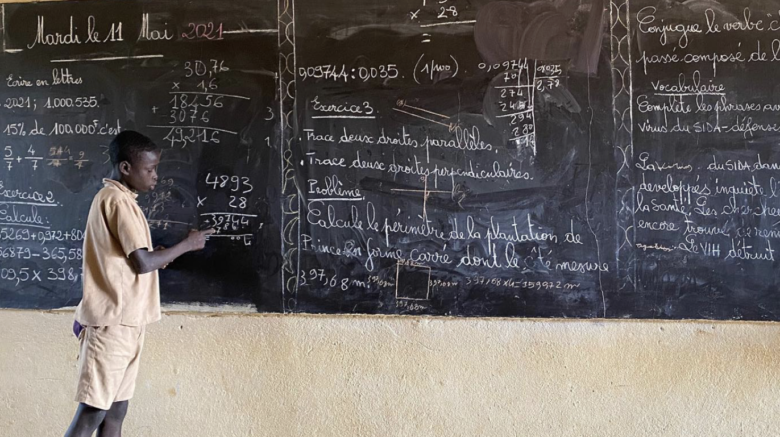Over 3000 farmers trained and counting.
From personal experiences and through data that we’ve been able to collect over the years, it became clear to us that solving child labor requires more than just one simple answer or solution. For decades now, the economics of cocoa has been working against the children, the farmers, and the communities in which they live. We needed to change course by making the economics work for them. “Cacao-nomics”, a comprehensive approach was developed and implemented to focus on solving the problem from its roots rather than treating the symptoms and we’ve been doing it without pointing fingers.
Through months of hard and sometimes painful negotiations, we reached an agreement with the farmers to let the children attend the local school. We did it by focusing on making the business case of how unprofitable and inefficient it was for them to rely on children for farm labor. Our findings and conviction on the matter came from the needs analysis we performed to uncover the controllable root causes that pressured farmers to use child labor.
From the 279 farmers we surveyed, we discovered that farms produce an average 40% less than normal production capacity. Additionally, an average farmer has an annual income of $700. The overwhelming data we collected showed that there is a strong positive correlation between the use of child labor and the farmers’ income making abilities. The survey results had a profound impact on us as we began to understand what some of these farmers have to go through. Our relationships with them grew stronger and mutual trust was built as a result. We, together with the farmers, started working on a range of solutions to address the issues uncovered by our study.
Training sessions were initiated focusing on best agricultural practices, savings, investing, and revenue diversification. 45 farmers were trained initially as a pilot. We analyzed the performance of the 45 farmers who had been trained, and we were amazed by the results. Their yield increased by 30% one year after they started implementing our recommendations. This increase allowed one farmer, Louis, to have enough extra profit to build a house for his family in a two-year period. Today, we have trained over 3,000 farmers. The training we provided to these farmers did not stop with the agriculture best practices. We took our assistance one step further. We are currently piloting with 50 of them a program called E-Agriculture through which we are using cell phones to make farming information and market data available to them on a daily basis. The road ahead of us is still very long cause 3,000 farmers out of the 800,000 in the Ivory Coast alone don’t represent a big enough for a real change to occur, but we believe in our strategy built on mutual trust and strong collaboration. For us, collaboration is the new leadership!


